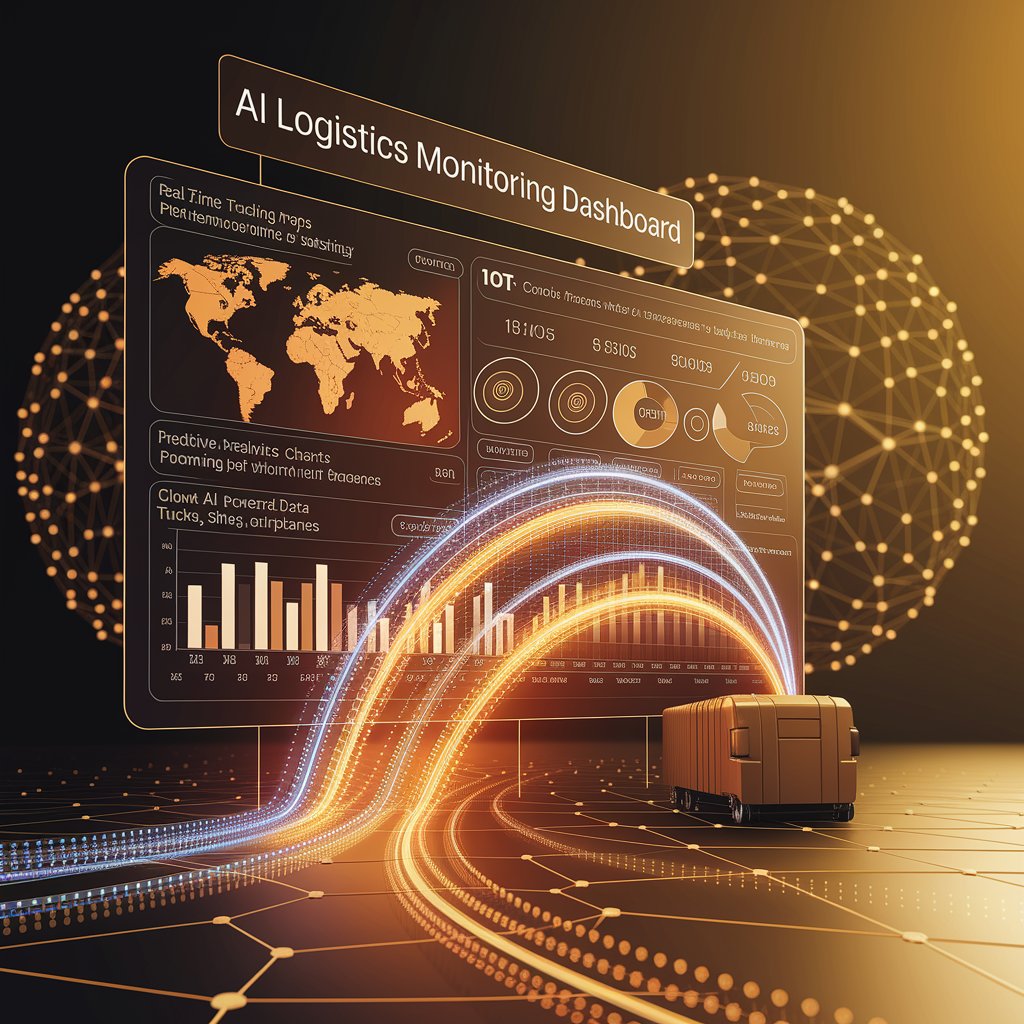AI Logistics Monitoring: Real-Time Intelligence for Supply Chain Control

Introduction
This is where AI logistics monitoring is transforming the industry. By combining artificial intelligence with IoT sensors, GPS, and predictive analytics, companies can achieve real-time visibility, anticipate risks, and automate corrective actions across the supply chain.
What Is AI Logistics Monitoring?
AI logistics monitoring is the use of artificial intelligence and machine learning to track, analyze, and manage supply chain activities in real time. Unlike traditional monitoring systems, which only report what has happened, AI systems provide predictive insights and proactive alerts to prevent issues before they escalate.
Core capabilities include:
- Real-time shipment visibility
- Cargo condition monitoring (temperature, humidity, vibration)
- Predictive delay alerts
- Automated anomaly detection
- Continuous risk assessment

Key Features of AI Logistics Monitoring
- End-to-End Visibility – AI integrates data from carriers, warehouses, and IoT devices.
- Predictive Analytics – Forecasts potential delays or disruptions.
- Cargo Condition Monitoring – Tracks sensitive goods with IoT-enabled sensors.
- Automated Alerts – Sends proactive notifications to stakeholders.
- Fraud & Theft Detection – AI identifies unusual shipment patterns or route deviations.
- Integrated Dashboards – Centralized control panels for logistics managers.
Benefits of AI Logistics Monitoring 📈
- Risk Reduction – Early detection of disruptions minimizes losses.
- Operational Efficiency – Automates manual checks and reporting.
- Customer Satisfaction – Provides accurate ETAs and proactive communication.
- Cost Savings – Reduces detention fees, spoilage, and emergency shipments.
- Sustainability – Optimized routes and reduced waste lower emissions.
- Compliance – Supports global trade rules with real-time monitoring.

Real-World Applications
- Pharmaceutical Logistics – Monitor vaccine shipments with real-time temperature alerts.
- Perishable Goods – Track food cargo conditions to ensure freshness.
- Freight Forwarders – Provide clients with live dashboards for shipment visibility.
- Maritime Shipping – Predict port congestion and reroute vessels.
- E-commerce – Enhance customer experience with proactive delivery updates.
Challenges in AI Logistics Monitoring
- Data Quality Issues – AI accuracy depends on reliable sensor and GPS data.
- Integration Complexity – Legacy ERP and TMS systems may not support AI seamlessly.
- Connectivity Gaps – Remote areas may lack reliable IoT coverage.
- Cybersecurity Risks – Sensitive cargo and route data must be secured.
- High Costs – Advanced AI platforms and IoT devices require investment.

Best Practices for Implementation
- Deploy for High-Value Cargo First – Focus on pharma, electronics, or perishables.
- Ensure Clean Data Pipelines – Standardize GPS, IoT, and carrier inputs.
- Integrate Across Platforms – Connect AI with ERP, TMS, and WMS.
- Leverage Predictive Insights – Use AI to move from reactive to proactive decisions.
- Train Teams & Customers – Ensure adoption and trust in AI-driven insights.
- Measure ROI Continuously – Track savings, risk reductions, and service improvements.
The Future of AI Logistics Monitoring 🚀
- Autonomous Monitoring Systems – AI platforms taking corrective action without human input.
- Digital Twins – Simulating logistics networks for predictive monitoring.
- Blockchain-Backed Monitoring – Tamper-proof cargo condition and location data.
- Edge AI – Real-time monitoring processed at ports, fleets, and warehouses.
- Sustainability Tracking – AI measuring emissions and optimizing green logistics.
Conclusion
AI logistics monitoring is transforming supply chains from reactive networks into proactive, intelligent ecosystems. With predictive insights, real-time tracking, and automated alerts, companies can reduce risks, cut costs, and deliver superior customer service.
For logistics providers, freight forwarders, and shippers, adopting AI logistics monitoring is not just a technology investment—it’s a competitive advantage in global trade.
